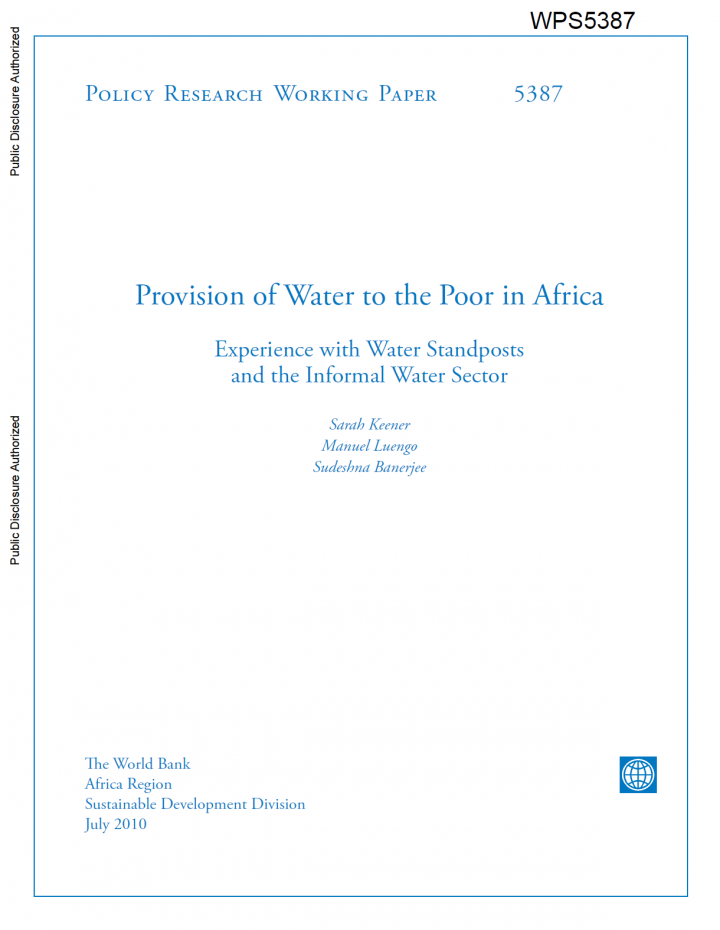Provision of Water to the Poor in Africa - Provision of Water to the Poor in Africa
Keener, S., Luengo, M., Banerjee, S. (2010)

Published in: 2010
Pages: 65
Publisher:
The World Bank
Author:
Keener, S., Luengo, M., Banerjee, S.
Uploaded by:
SuSanA Admin
Partner profile:
common upload
876 Views
4 Downloads
Standpipes that dispense water from utilities are the most common alternatives to piped water connections for poor customers in the cities of Sub-Saharan Africa. Fifty-five percent of the unconnected urban population relies on standpipes as their first water source. Other informal water providers include household resellers and a variety of water tankers and vendors, which are the first water source of 1 percent and 3 percent of the urban population, respectively.
In the cities studied, the percentage of unconnected households ranges from 12 percent to 86 percent of
the population. The percentage of unconnected people covered by standpipes is substantially higher for countries with higher rates of household connection, while the percentage of unconnected people covered by water
tankers or water vendors is higher for countries with lower rates of household connection.
Water prices in the informal market are much higher than for households with private connections or yard
taps. Although standpipes are heavily subsidized by utilities, the prices charged by standpipe operators
are closely related to the informal water reseller price. Standpipe management models also affect the informal price of water. For example, the shift from utilities management to delegated management models without complementary regulation or consumer information has often led to declines in service levels and increased prices.
Standpipes are not the only or even the most efficient solution in peri-urban areas. Programs that promote
private household connections and arrangements that improve pricing and services in the household resale market should also be considered by policy makers.
Bibliographic information
Keener, S., Luengo, M., Banerjee, S. (2010). Provision of Water to the Poor in Africa - Provision of Water to the Poor in Africa. The World Bank
Filter tags
English















